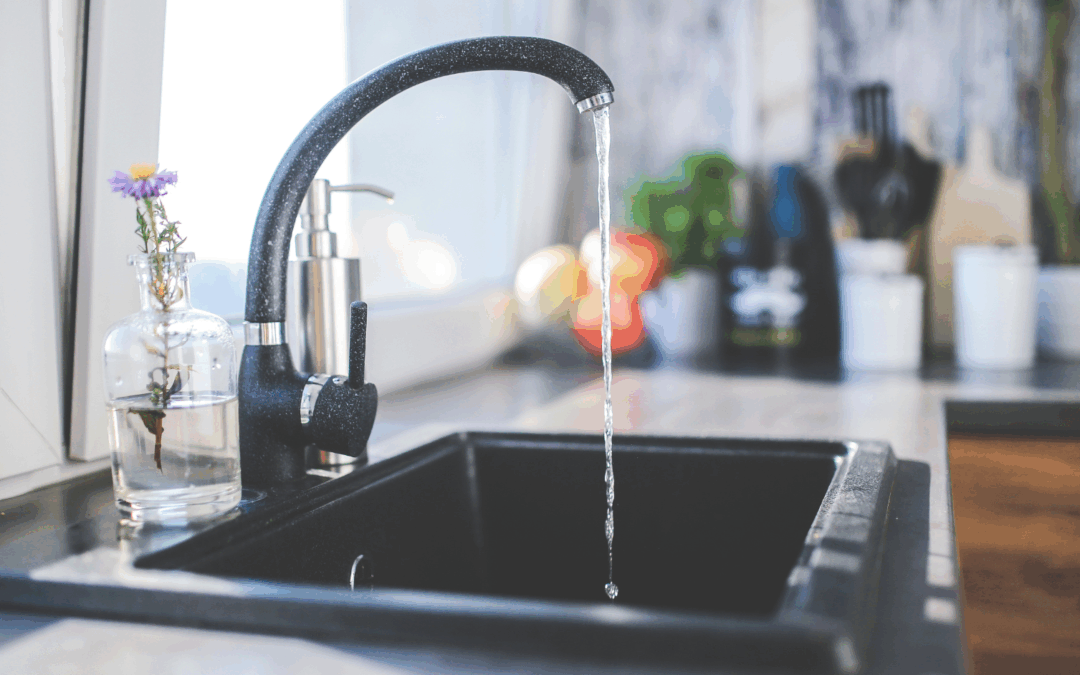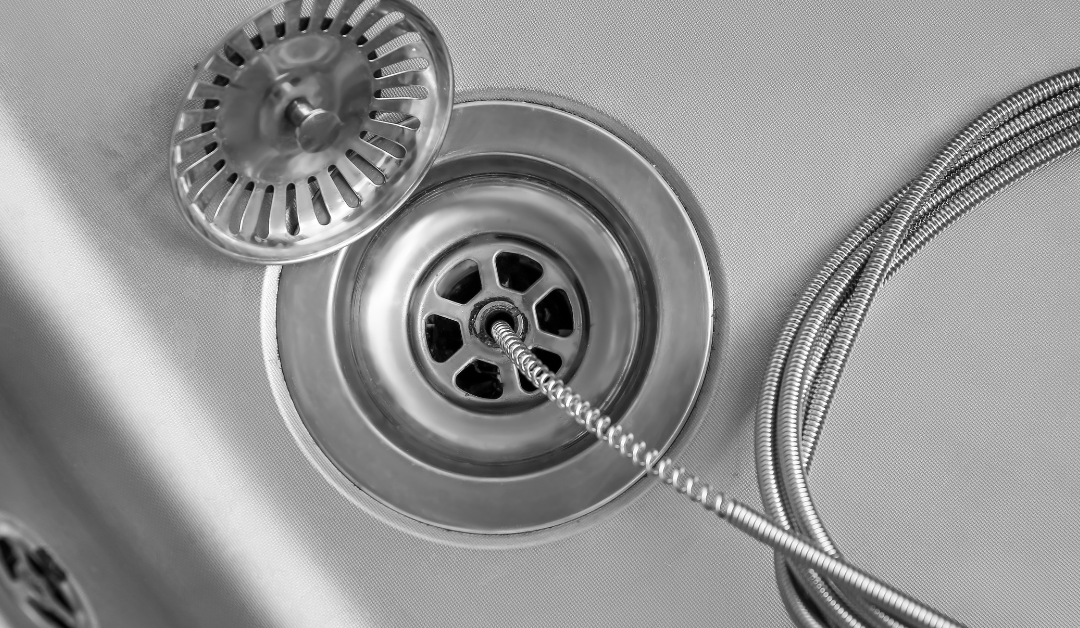The garbage disposal has become an essential kitchen appliance in millions of American homes, transforming how we handle food waste and making cleanup more convenient. But have you ever wondered what happens when you flip that switch and hear the familiar grinding sound?
How does a garbage disposal work? Understanding how your garbage disposal works can help you use it more effectively, avoid costly repairs, and extend its lifespan.
This comprehensive guide will walk you through the inner workings of your disposal unit, explain the grinding process, cover the different types available, and provide essential maintenance tips. By the end, you’ll have a thorough understanding of this hardworking kitchen helper and how to keep it running smoothly for years to come.
Schedule Service Online
Get a free estimate so you know what you're signing up for
"*" indicates required fields
For Emergency Services Call: 410-255-9300
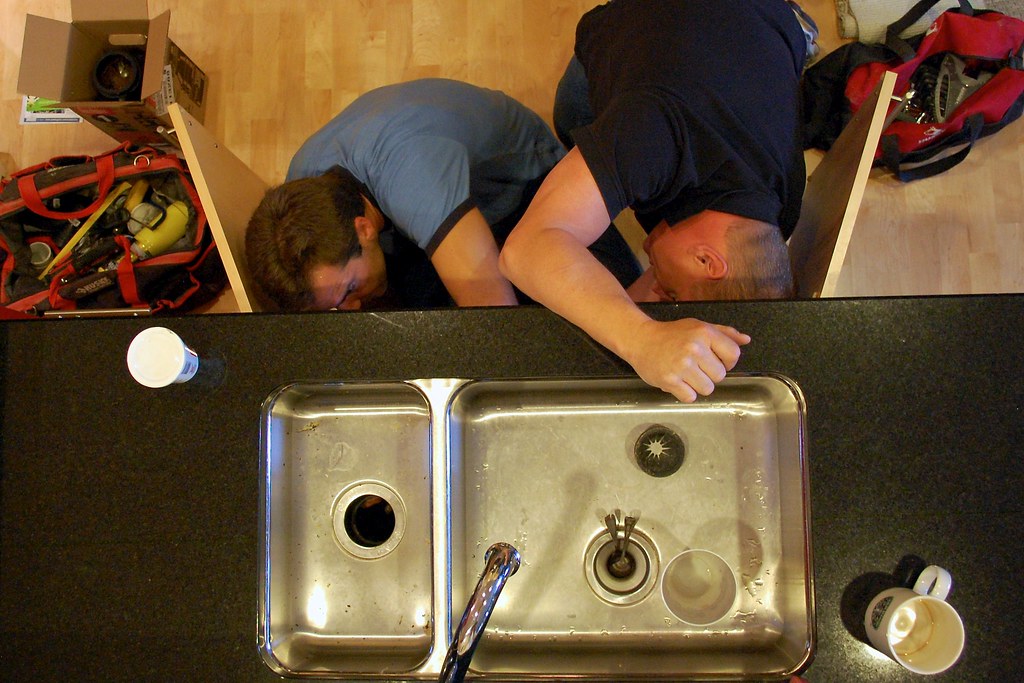
“266/365: No Cracks!” by bradleypjohnson is licensed under CC BY 2.0
The Basic Components of a Garbage Disposal
A garbage disposal unit consists of several key components working together to break down food scraps. The main parts include the hopper chamber (also called the upper chamber), grinding chamber (lower chamber), motor, shredder ring, and connecting mechanisms to your plumbing system.
The hopper chamber sits directly beneath your kitchen sink drain and serves as the entry point for food waste. This upper chamber connects to the grinding chamber below, where the actual breakdown of food particles occurs. The motor, typically ranging from 1/3 to 1 horsepower, powers the entire system and drives the grinding action.
The shredder ring, a crucial component, features sharp edges that work with the grinding mechanism to break down food scraps into tiny particles. This stationary shredder ring remains fixed while other components rotate, creating the shearing action necessary to process food waste effectively.
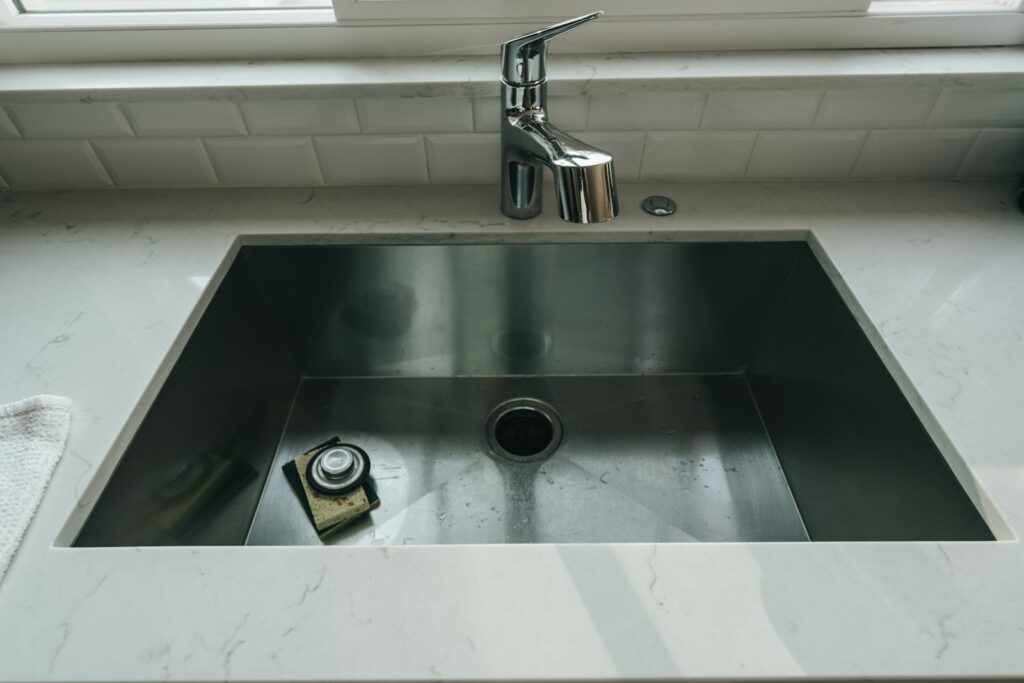
Photo by Henry Kobutra on Unsplash
How the Grinding Process Works
When you turn on your garbage disposal, the motor spins a flywheel at high speed—typically around 1,725 revolutions per minute. Contrary to popular belief, garbage disposals don’t use sharp blades like a blender. Instead, they employ centrifugal force and grinding action to break down food waste.
The motor shaft connects to the flywheel, which has small, blunt lugs or impellers attached. As the flywheel spins, these impellers create centrifugal force that throws food scraps against the stationary shredder ring. The shredder ring contains sharp, raised edges that work like a cheese grater, breaking down the food into small particles.
Cold water running during operation serves multiple purposes. It helps flush the ground food particles through the system, keeps the motor cool, and solidifies any grease or fat, making it easier to grind and flush away. The grinding action continues until the food particles become small enough to pass through holes in the grind ring and exit through the drain pipe.
Two Main Types of Garbage Disposals
Continuous Feed Models
Continuous feed models represent the most common type of garbage disposal found in American homes. These units operate with a wall switch, allowing you to add food scraps while the disposal is running. You simply flip the switch, run cold water, and feed food waste into the unit gradually.
This design offers convenience and efficiency for most households. You can process large amounts of food waste by adding scraps continuously rather than in batches. The continuous feed system works well for families who generate significant food waste or frequently cook elaborate meals.
Batch Feed Models
Batch feed models operate differently, requiring you to load all food scraps into the hopper chamber before operation begins. These units start only when you insert and turn a special cover or stopper, which acts as both a lid and activation mechanism.
Batch feed disposals offer enhanced safety features since they cannot operate with the cover removed, preventing accidental contact with moving parts. They also tend to be quieter during operation and may be preferred in households with small children. However, they typically cost more than continuous feed models and may take longer to process large amounts of food waste.
The Complete Disposal Process Step by Step
The food waste disposal process begins when you scrape food scraps into your kitchen sink drain. Before starting the unit, always run cold water—this step is crucial for proper operation and protecting your plumbing system.
Once you activate the disposal unit, the motor powers up and begins spinning the flywheel. Food scraps fall into the grinding chamber where centrifugal force takes over. The spinning impellers catch the food waste and fling it outward against the shredder ring with considerable force.
The stationary shredder ring’s sharp edges slice and tear the food scraps into progressively smaller pieces. This grinding action continues as cold water flushes the particles around the chamber. Only when food particles become small enough to pass through the holes in the grind ring can they exit the system.
The ground food particles mix with water and flow through the drain pipe into your home’s waste line. From there, they travel through your plumbing system to wastewater treatment plants, where they’re processed along with other household waste.
Proper Usage and Maintenance
Using your garbage disposal correctly extends its life and prevents costly plumbing problems. Always run cold water before, during, and after operation. Cold water helps the motor run efficiently and prevents grease from coating the grinding components.
Avoid putting fibrous foods like celery, artichokes, or corn husks down the disposal, as these can wrap around the impellers and cause jams. Similarly, hard items like fruit pits, bones, or non-food items can damage the grinding components or dull the shredder ring.
Never pour grease or oil down the disposal, even with hot water running. These substances can solidify in your pipes and create serious clogs. Instead, let grease cool and dispose of it in the trash.
What Not to Put in Your Garbage Disposal
Certain items can damage your disposal unit or cause clogs in your plumbing system. Fibrous foods like onion skins, potato peels, and banana peels can wrap around moving parts and jam the motor. Hard materials like bones, fruit pits, and ice cubes (in large quantities) can damage the impellers or shredder ring.
Non-food items should never enter your disposal. Utensils, bottle caps, rubber items, and cleaning materials can cause serious damage and pose safety hazards. Even small amounts of these materials can jam the system or damage internal components.
Expandable foods like rice and pasta should be avoided since they can swell and create blockages in your drain pipe or waste line. Coffee grounds, while not immediately harmful, can accumulate over time and contribute to drain clogs.
Troubleshooting Common Problems
When your garbage disposal stops working, several common issues might be the cause. If the unit won’t start, check that it’s plugged in and the circuit breaker hasn’t tripped. Most disposals have a reset button on the bottom that may need pressing after an overload.
Clogs often occur when improper items go down the disposal or insufficient water is used during operation. If water backs up in the sink, turn off the disposal immediately and check for visible obstructions. Never put your hand into the disposal unit—use tongs or pliers to remove visible items.
Strange noises usually indicate something is caught in the grinding chamber. Turn off the power and water, then use an Allen wrench (usually provided with the unit) to manually turn the motor shaft from underneath. This can often free stuck items or reset jammed impellers.
Environmental Impact and Waste Management
Garbage disposals play an interesting role in household waste management. By grinding food scraps into small particles that flow to wastewater treatment plants, they divert organic waste from landfills. This can reduce methane emissions that occur when food waste decomposes in anaerobic landfill conditions.
However, the environmental impact varies depending on your local wastewater treatment facilities. Some modern plants can process the additional organic load effectively, while others may face challenges. Many facilities now capture methane from waste processing for energy production, making food waste disposal through grinding a more environmentally friendly option.
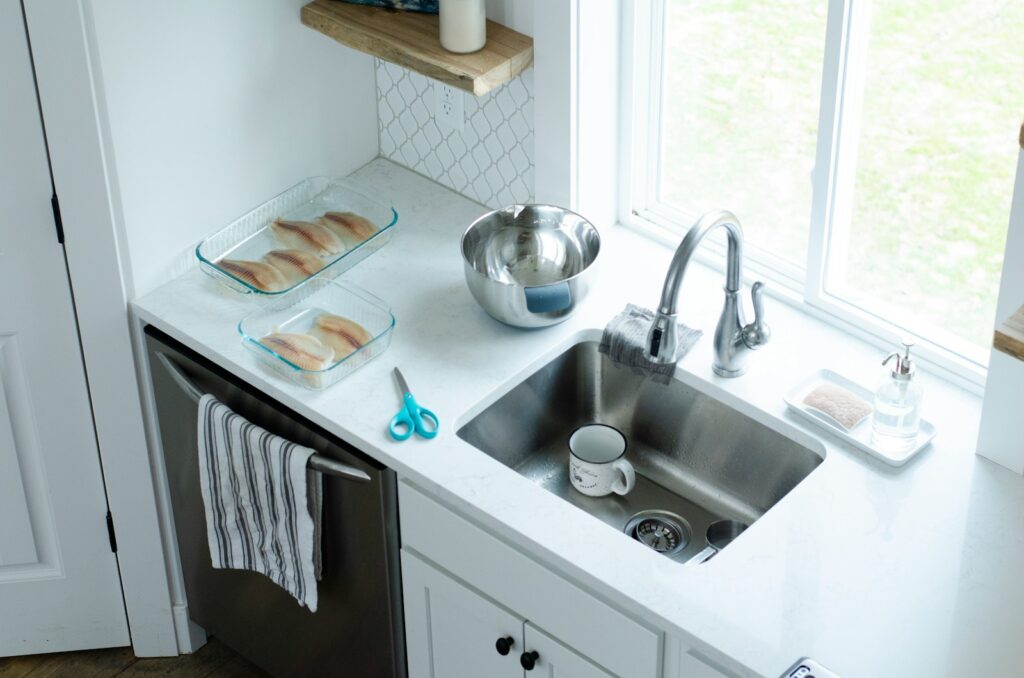
Photo by Taylor Flowe on Unsplash
Maintenance Tips for Longevity
Regular maintenance keeps your garbage disposal running efficiently and extends its lifespan. Clean the unit weekly by grinding ice cubes, which help remove debris buildup on the grinding components. Follow this with cold water and a small amount of dish soap to remove grease residue.
For deeper cleaning, try grinding citrus peels like lemon or orange rinds. The natural oils help eliminate foul odors while the peels’ texture helps clean the grinding chamber. Baking soda and vinegar can also neutralize odors—pour half a cup of baking soda followed by a cup of vinegar, let it foam for a few minutes, then flush with cold water.
Avoid using harsh chemicals or bleach, which can damage rubber seals and metal components. Commercial disposal cleaners are available, but natural cleaning methods are often just as effective and safer for your plumbing system.
Making the Right Choice for Your Home
When selecting a garbage disposal, consider your household’s food preparation habits and the amount of waste you typically generate. Larger families or frequent entertainers might benefit from more powerful motors (3/4 to 1 horsepower) that can handle higher volumes of food waste.
Noise level is another important consideration, especially in open-concept homes or apartments. Look for models with sound insulation or anti-vibration features if quiet operation is important. Stainless steel grinding components last longer than galvanized steel, though they cost more initially.
Consider your home’s electrical capacity as well. More powerful units may require dedicated circuits or electrical upgrades. Consult with a qualified electrician if you’re unsure about your home’s electrical capacity for garbage disposal installation.
Top 7 Garbage Disposal Cleaning Products and Brands
Keeping your garbage disposal clean is crucial for efficient performance and odor prevention. Here are seven top cleaning products and brands that are safe for residential use:
Glisten Garbage Disposer Cleaner
A trusted product that removes buildup, odors, and grease effectively. It uses biodegradable ingredients and is septic-safe.
Affresh Garbage Disposal Cleaner
Known for its foaming action, Affresh effectively tackles food residue and eliminates odors. It’s easy to use and leaves a fresh citrus scent.
Plink Garbage Disposal Freshener and Cleaner
A convenient cleaning solution in the form of small spheres that freshen and clean your disposal. Safe for all disposers and septic tanks.
Powered by natural citric extracts, Lemi Shine provides a deep clean while also deodorizing and freshening your disposal. It’s eco-friendly and non-toxic.
Seventh Generation Natural Kitchen Cleaner
This plant-based cleaner is safe for garbage disposals and is free from harsh chemicals, offering a sustainable cleaning solution.
Mr. Clean Garbage Disposal Cleaner
Known for its strong cleaning capacity, this product targets grease and grime while leaving a refreshing scent. It’s easy to use and highly effective.
Grab Green Garbage Disposal Freshener
These pods use natural ingredients to freshen and clean garbage disposals, removing odors and stuck-on grease. They’re cruelty-free and biodegradable.
Make sure to follow the manufacturer’s instructions for safe and effective cleaning when using any of these products!

Keeping Your Kitchen Running Smoothly | How Does A Garbage Disposal Work?
Remember, if unsure whether you should DIY or not, always go with a professional like MD Sewer and Plumbing for your plumbing repair, emergency, and maintenance services!
Understanding how your garbage disposal works empowers you to use it correctly and maintain it properly. This essential kitchen appliance simplifies food waste management when used appropriately, but requires respect for its limitations and regular care to function optimally.
Remember that your garbage disposal is just one part of your kitchen’s plumbing system. Proper use protects not only the unit itself but also your drain pipes, waste lines, and the broader plumbing infrastructure. When problems arise that you can’t resolve with basic troubleshooting, don’t hesitate to contact a professional plumber who can diagnose and repair issues safely.
By following the guidelines in this article, you’ll maximize your disposal’s efficiency, minimize repair costs, and ensure this hardworking appliance serves your household well for many years to come.


